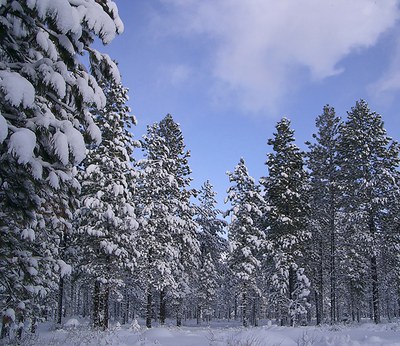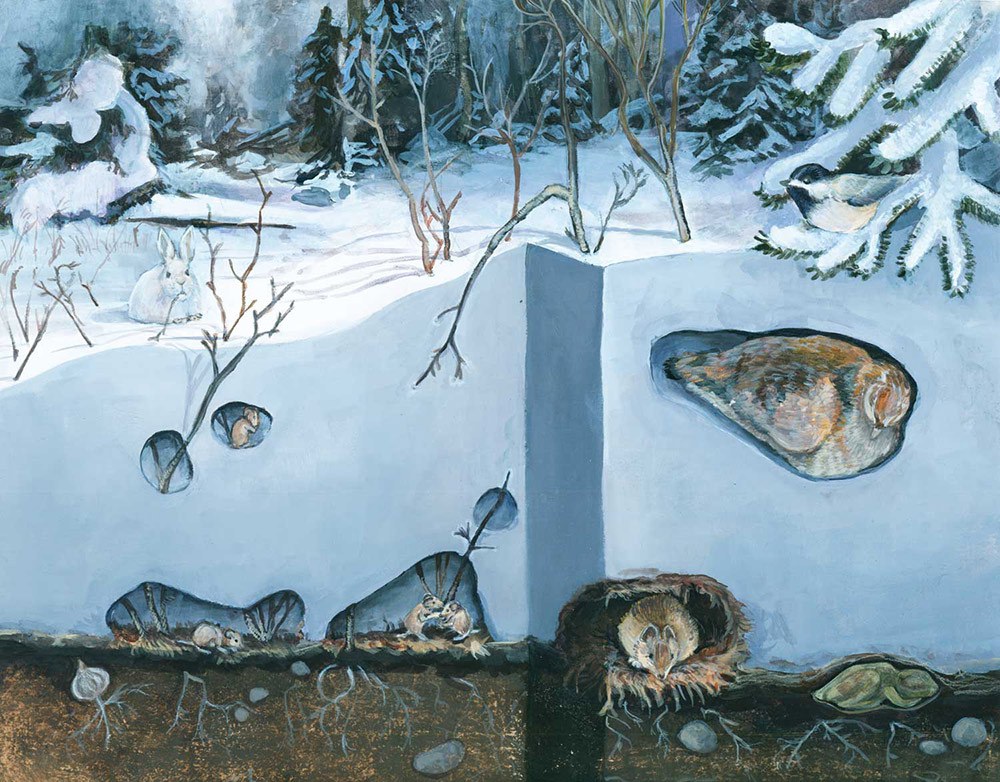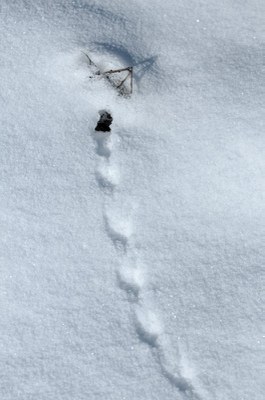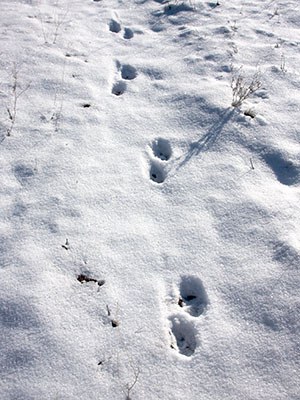
Surprisingly, snow can act as an insulator for many small animals like mice and voles. They can survive the winter under the snow in the subnivean zone (“sub”= under and “nives” = snow). The subnivean zone is a hidden, bustling community thriving right beneath our feet!
How is the subnivean zone created?
When snow falls before the ground is frozen solid, the ground warms the snow closest to the surface and creates water vapor. As water vapor rises, it begins to form ice crystals on the lowest layer of the snowpack. The layer of ice that forms then begins to act like the roof in our own homes. The snow that continues to fall on the "roof" provides insulation and keeps temperatures around 32 degrees for most of the winter. Temperatures remain regulated in the subnivean zone through the winter, even when outside air temperatures dip below freezing. The subnivean zone can also be created with vegetation, rocks, or logs that physically hold snow off the ground, creating a layer of space for small animals to travel and move around throughout the winter.  Life in the subnivean. Illustration by Kristin Link (www.kristinillustration.com)
Life in the subnivean. Illustration by Kristin Link (www.kristinillustration.com)
The subnivean zone is like a labyrinth of tunnels and chambers used by animals to travel, sleep, store food, and enter and exit their hidden world below. Some animals create food caches below the snow, to ensure they have enough food when they need it. The tunnels also provide a path to different known food sources, such as seeds and grasses that may be near trees and downed logs.
Holes above ground in the snow not only provide places where animals can enter or exit, but also act as exhaust vents for carbon dioxide from animal respiration to escape. Next time you are out in the snow, look around as you walk. If you see small tracks, follow them. If you can find a hole where they disappear, you may have found an entry or exit point to the secret subnivean world below!
You may think that being under cover of snow for most of the winter guarantees small animals safety from predators, but not so! Predators that have an exceptional sense of hearing, like owls, foxes, coyotes, and wolves, can actually hear the movements of small mammals under the snow. You may have seen video or photos of foxes plunging headfirst into the snow in pursuit of subnivean dwellers. The fox's technique quickly collapses the tunnels or chambers beneath the snow, making it nearly impossible for prey to escape.
Ermines (a type of weasel) take a different approach. As winter approaches, their coats turn white and act as camouflage, making it easier to enter and travel the tunnels themselves in search of their next meal. They may also take over tunnels and chambers created by other animals to keep themselves warm and protected from the elements.
Owls use their innate sense of hearing to listening from their perch to locate animals under the snow. As they zero in on the location of an animal under the snow, they swoop down and sink their talons into the snow to grab their prey.
Find your local subnivean zone:
As the snow melts in the spring or during mid-winter thaws, evidence of the secret subnivean zone begins to appear. Look for the hardened snow or ice tunnels lingering after the lighter snow melts away. In your own yard, you might find small, winding lines of beaten down grass, or even domes of chewed grass that may have covered the tunnels themselves.
More information:
Over and Under the Snow, by Kate Messner and illustrated by Christopher Silas Neal.
The Subnivean Zone, life under the snow, Michigan State University Extension


